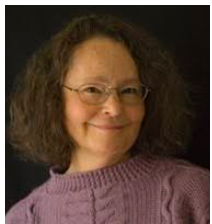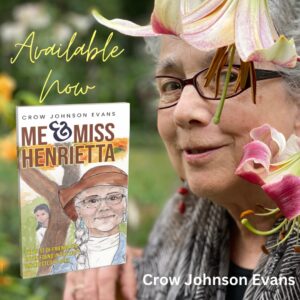My friend, Juliann King, has expanded my awareness of the fiber arts, spinning yarn, knitting, dyeing, and weaving. She offers information “out-of-the-blue” that’s excellent. When a Fellowship for Fiber Arts was announced at the Writers’ Colony at Dairy Hollow (WCDH) in Eureka Springs, AR., Juliann said we’d be lucky to have Beth Brown-Reinsel interested. Alakazam. During her residency, Beth taught two workshops!

Crow: Beth, you are a rockstar among the vast fiber enthusiast community. For me it is not only the clear instruction you give for multiple techniques but also your respect and information about the history of these skills. That’s like physically connecting my hands to those of our ancestors! Was there a moment that you decided or realized that you could do this?

Beth: I think this awareness came on me slowly as I read about, studied, and practiced obscure knitting techniques. It all coalesced when I read Priscilla Gibson-Roberts’ book Knitting in the Old Way, first published in the late 1980s. I realized and felt this connection to women from before who worked so very hard– when knitting wasn’t a leisure activity but a very serious endeavor to clothe and protect one’s family from the elements. These knitters used their skills to address problems of wear and tear and fit, without forgetting to add beauty to whatever they were knitting. They created stronger “cast-on”s, gussets that improved fit, motifs that made the wearer proud (and the knitter too)! Because of the times, these women, who today might be engineers or mathematicians, put their ingenuity to their knitting and we are the richer for it today.
Crow: Where were you born and raised? Did you come from a family rich with knitting history? Who taught you your first stitches?
Beth: I was born in Indiana, but soon moved to the west coast. My life up until the age of 16 was haphazard as we moved almost every year while my father pursued his education and different jobs. Both of my parents were teachers, and my mother made things when necessary, but I would not call her a “Maker”. No one in my extended family knitted, but I saw someone somewhere knitting because I remember wanting to know how to knit at the age of 7. My mother connected me with the lady who lived on the corner who said she would teach me. She taught me English-style and the basics (cast-on, knit, and purl). I bought a Columbia Minerva book to teach myself to cable and bind off and made plenty of those old garter stitch slippers. When I was 9, a distant relative from Switzerland visited and she taught me Continental-style knitting and the Norwegian purl.
Crow: A few people knit well, a few can teach, and a few are able to analyze how it all works. You’ve taken these skills so much farther. What gave you the confidence to write books, teach classes, and make videos? How did you overcome the snide mumbles we carry in our imaginations saying, “Oh, you could never do that.”?
Beth: Oh, believe me, I have said, “I can’t do that!” many times. I am lucky that life seems to push me in the direction I need to go, until I see it’s clear I should do that challenging thing. Deciding to write my book evolved from creating a correspondence course for The Knitting Guild of America. A television producer happened to take my gansey class, long ago. She approached me about making a DVD of my workshop, and I said “No, I couldn’t possibly do that!” Every year for several years she nudged me gently until it finally occurred to me that I was being presented with a wonderful opportunity that I had better jump on!
But I will say that teaching always seemed natural to me. I love the interaction with the students and creating fun workshops is very enjoyable to me. I love technical writing, creating charts, and photographing samples to insert into the handouts, which often end up being 25 pages or longer. I started teaching when I ran a yarn shop in the early 1980s with two other women. I soon moved on to teaching different levels of knitting at the local community college. From there, a national circuit (TKGA, Stitches, knitting guilds, and shops) was forming and I jumped in with both feet, since I love to travel!
Crow: From my perspective you are an artist, entertainer, and teacher. But you are so much more than those refiners. There are enormous high points and devastating low points in our lives. If you feel comfortable, please talk about the highs and lows in your life and how you survived those times. It’s an uncomfortable question, I know, but your experiences may give hope to others. Why include highs? I added that because in the music business, many made it through the lows but didn’t survive the highs.
Beth: Well, perhaps my greatest low is why I would talk my reticent self into taking risks. In 1984, while my little family of four was camping, my daughter Chloë died from SIDS at the age of 6 months. Surviving this devastating loss showed me that I had the strength and tenacity to work through that grief and could do so much more than I thought. It is always in the back of my mind when I take on something new that I am not confident about. Surviving divorce also galvanizes one, as did raising my kids on my own…on my income from teaching knitting.

The highs have come from my ability to travel the world, teaching knitting. I might have been an anthropologist in another life, because immersing myself in other cultures is thrilling to me. Yes, I love the unique knitting (or other textile tradition) each country shares, but I also love the food, the music, the architecture, the museums, traditional dance––any culture that is different my own. This past February, just before Covid restrictions became a reality, I taught on a cruise to Antarctica, and was thrilled to have my eldest son along to share in the experience. I felt I had arrived at the pinnacle of my life as I saw the cold arctic beauty there. That trip has sustained me over the last year!

Crow: My questions have made it sound like you have done it all. What do you dream and plan for the future? What is the wildest “maybe” you carry?
Beth: Hmmm, that’s hard to say. There is so much more of this world I want to see. I was in China teaching in 2019, and plan to take an actual vacation to Japan in October. I want to explore Asia more, and perhaps Africa as well. Taking textile classes in any place would really feed my soul. I saw parts of South America during the last cruise I took, and Peru, which was not on the itinerary, fascinates me–I would love to go there. I try to stay open to whatever theme is next in my life, rather than forcing an agenda. And yet, I am an obsessive planner for the details. That may not make sense, but there it is.

Crow:I was so surprised that you have diverse skills, spinning, weaving, cooking, writing books,…etc. I’m sure that is not the full list. What else fills your time and joy?
Beth: Oh, lots of things! I do love to bake bread and try not to indulge in that too often. Last summer was my first time at home for the entire growing season in over 25 years and I relished working in my garden. I love plants in general and have a varying collection of trees, succulents, and cacti in my apartment.
I used to sell my own handspun yarns, and I miss the thrill of vegetal dyeing, though my spinning wheel and looms sit idle these days. I have more fiber stash than yarn, and my collection of reed for basket making is embarrassingly large as well. I am so very busy with teaching knitting and am inside so much, working on the computer, but I love being out in nature, and that is an activity I want to pursue. Having more free time in general is a goal in order to get back to spinning and weaving!
Learning new things is such a joy for me. I hope I will be able to continue to travel to expand my horizons, engage with others, and take time to be restful too.

Crow: Thank you so much for sharing your life, skills, and dreams with us. It is a joy to call you friend.
References:
https://knittingtraditions.com Beth’s website with information about patterns, books, CDs, blog.. and fascinating stuff.
